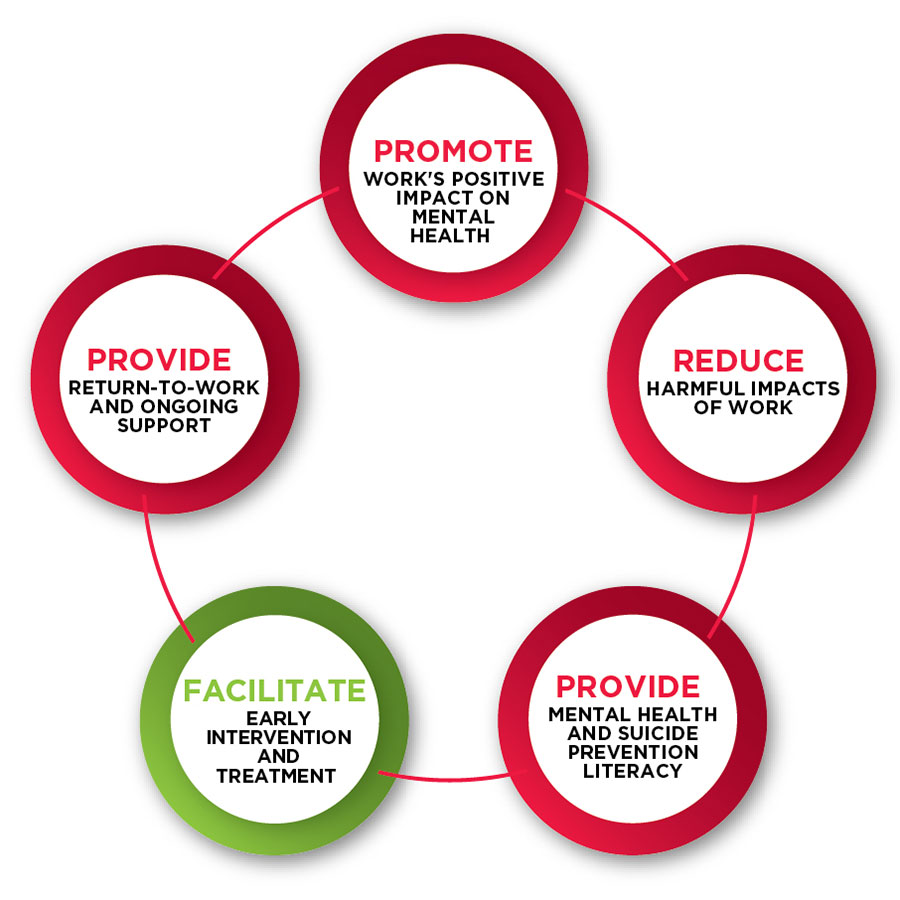Facilitating early intervention and treatment
BLUEPRINT FOR BETTER MENTAL HEALTH IN THE BUILDING AND CONSTRUCTION INDUSTRY.
WHAT CAN I DO TO FACILITATE EARLY INTERVENTION AND TREATMENT ON SITE?
POLICY
Workers who feel declaring a mental health condition could be detrimental to their employment will be reluctant to disclose mental health issues. Therefore, non-discriminatory workplace policies that support help seeking behaviour are vital.
EXAMPLES
Workers with lived experience of mental health issues or suicide who have recovered and are working successfully back in the industry can reduce barriers to help-seeking behaviour by sharing their experiences.
SUPERVISOR TRAINING
Ensuring supervisors are adequately trained in symptom identification and referral pathways will increase potential access to help.
PATHWAYS TO HELP
Developing multiple pathways to diverse types of support will encourage help-seeking and help-offering behaviours.
ACCESS TO EMPLOYEE ASSISTANCE PROGRAM (EAP)
Providing access to a thorough, tailored EAP for all workers on site will facilitate early intervention. EAP services are often flexible with a basic understanding of the industry serviced, however many smaller or subcontract employers in the industry do not currently have access to adequate EAP support for their staff.
MANAGER ASSISTANCE PROGRAMS (MAP)
Providing line managers with access to professionals who can provide guidance on how best to support their workforce is vital.
PEER SUPPORT NETWORKS
A well-supported peer network can work effectively (along with human resources and management structures) to look after individuals. Increasing awareness of support services among staff along with clearly visible connection points will help workers identify clear pathways to support.
ONSITE INTERVENERS
Intervention skills are simple and can be taught in a few days. Ensuring trained workers are onsite who have the ability to intervene when required is as important for mental health as first aid officers are for physical health in the industry.
